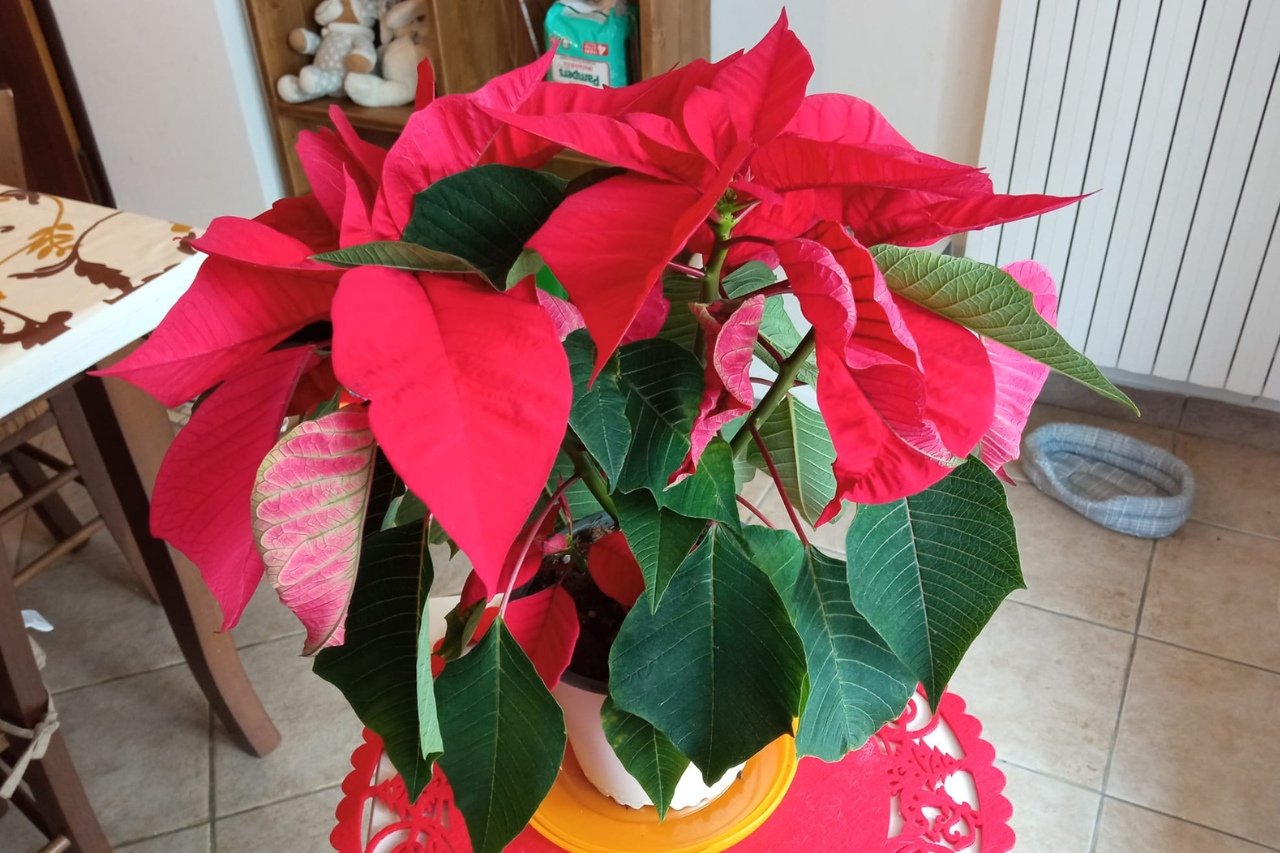Poinsettias are a holiday classic; I always love having a couple of them in the house during winter. Their red color brings me joy and warmth.
They are generally easy to maintain, making them suitable even for beginner gardeners.
However, they can sometimes be temperamental, and small mistakes can cause them to wilt and lose their beautiful bright red color, or even die.
To keep yours cheerful well beyond purchase day, follow these care tips and then take a look at the most common mistakes you absolutely must avoid.
5 Essentials Care Tips
Give it bright light
The first thing you have to keep in mind is that Poinsettias need lots of light, about 6–8 hours of bright daylight daily.
A south, east, or west window is ideal, and try to avoid dark corners or dim rooms.
As with almost all indoor plants, bright indirect light is best, because remember that strong midday sun can scorch the leaves.
Keep temperatures steady and cool-ish
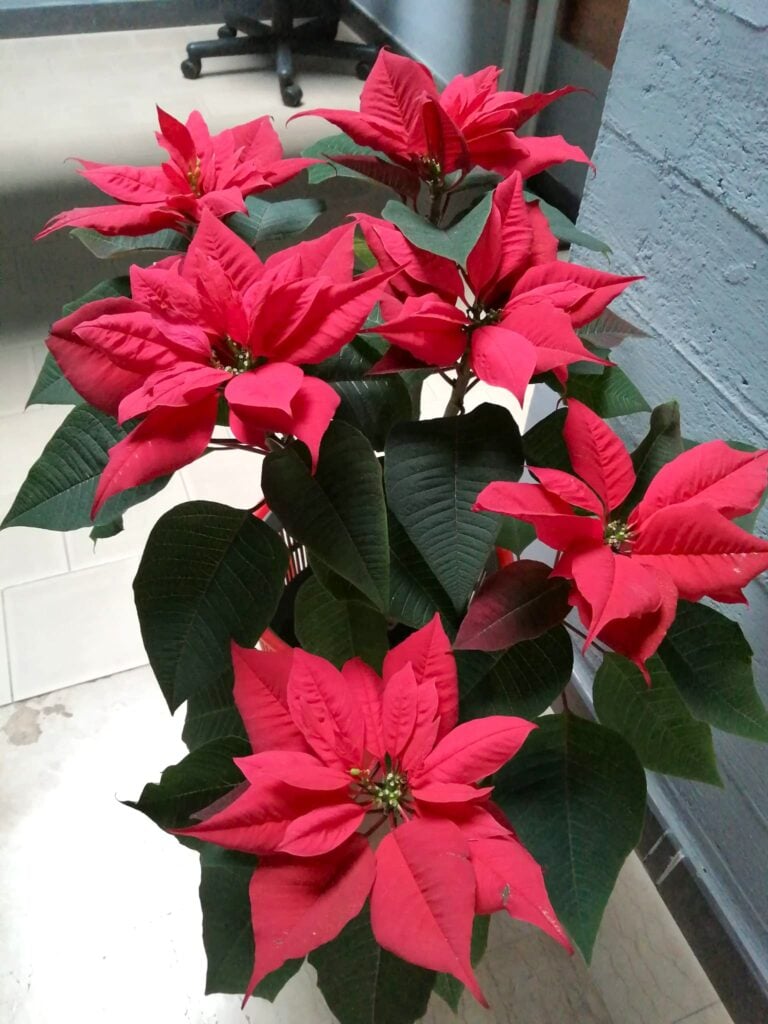
These plants like it on the cool side, roughly 65–70°F by day (and a bit cooler at night).
Don’t place them near hot radiators, vents, or wood stoves, and avoid cold drafts.
Please consider that a sudden chill (even a quick ride home on a freezing day) can shock a poinsettia and cause leaf drop.
Water thoroughly but don’t drown it
Water only when the top inch of soil feels dry.
When you water, pour enough until you see a little trickle from the drainage holes. Then let it drain fully, empty any excess from the saucer, so the roots aren’t sitting in water.
Good drainage is crucial because standing water causes root rot and yellowing leaves.
Remove any nursery wrapping
As soon as you get the plant home, take off its plastic sleeve or foil.
Those wrappings keep it moist in transit, but indoors, they trap humidity and can lead to mold and mildew.
If it has decorative foil, punch a hole or unwrap the pot so excess water can leave.
Boost humidity in winter
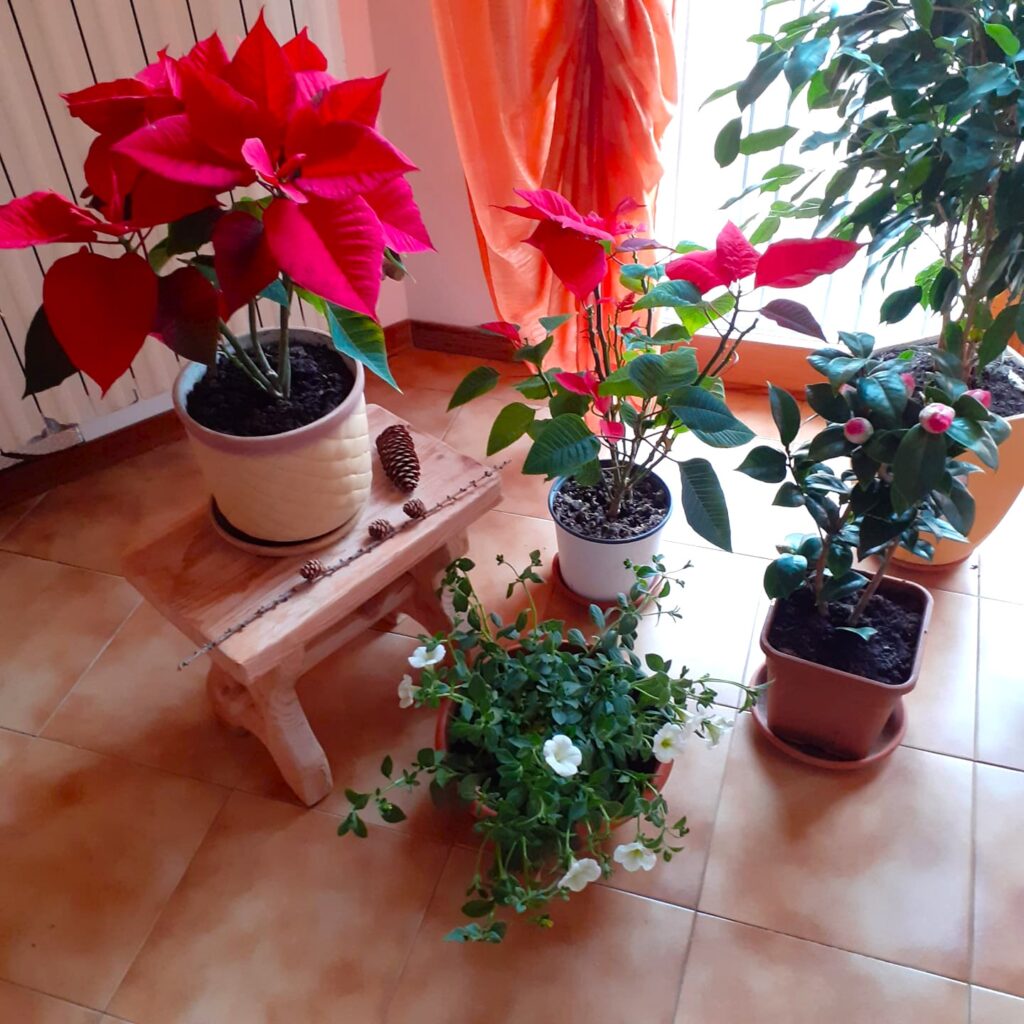
Dry heat (like from radiators in winter) can really stress a tropical plant like poinsettia.
To raise humidity, place the pot on a tray of damp pebbles or group it near other houseplants.
You can also use a small humidifier in the room to help keep the air from getting too parched.
Fertilize later, not now
Poinsettias in full color don’t need feeding. If you plan to keep it after the holidays and encourage new growth, start a weak monthly feed in late winter or spring when you see fresh leaves appear.
Keep in mind: a good poinsettia starts with a good plant. Look for one with deep green leaves and brightly colored, fully expanded bracts.
Avoid plants with yellowing leaves or many open yellow flowers (that means it’s past peak).
5 Mistakes That Will Kill It
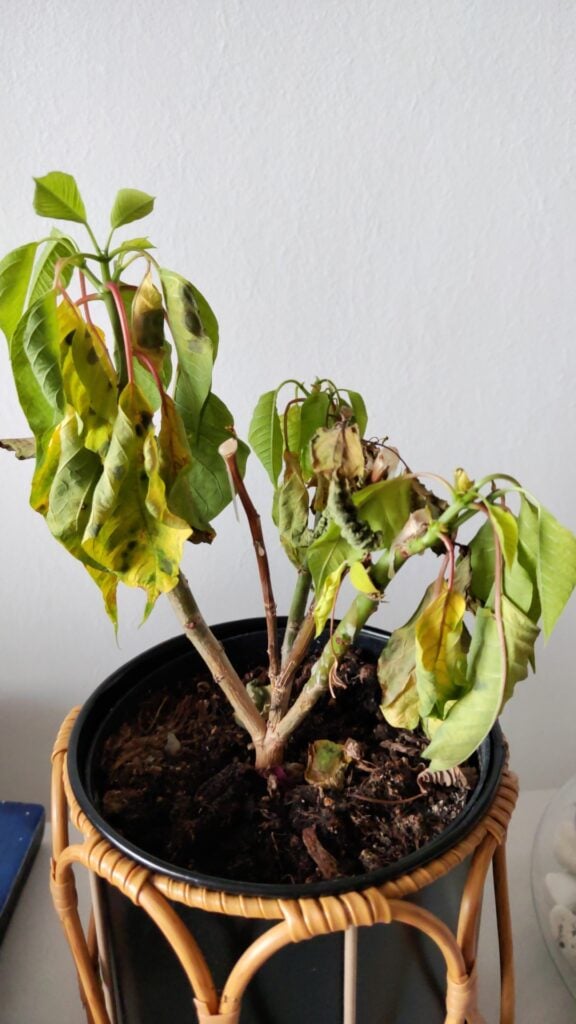
Leaving it in the wrapping
As you know, this plant is often given as a holiday gift and is therefore wrapped to look like a beautiful present.
However, you should never leave the plastic sleeve or foil cover on after bringing the plant home.
As I was saying before, that covering will hold in too much moisture and air, leading to mold, mildew, or a deformed plant.
PRO GARDENER: If you don’t want to remove the wrapper because you like it, you can punch holes in it to let it breathe. But I always recommend removing it.
Overwatering (or no drainage)
Another common mistake is using a pot without drainage holes. If you do so, the roots will sit in standing water and drown.
Remember that overwatering causes yellowing leaves, root rot, and can kill the plant outright.
Always empty excess water from the saucer, and wait to water again only when the soil feels dry a couple of inches down.
In addition, check that your pot has holes in the bottom; if not, you can make them yourself.
Letting it go bone dry
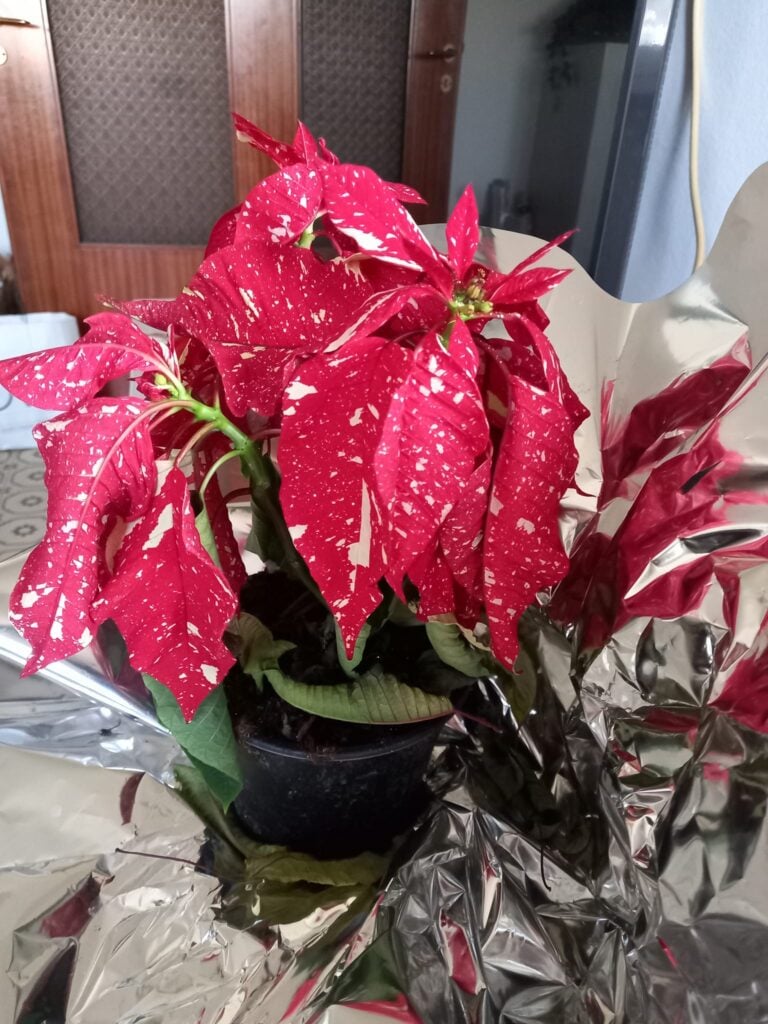
On the flip side, don’t let your poinsettia parch. If you wait too long between waterings, the bracts and leaves will droop and drop, and it may not recover.
A slightly wilted look is a warning: give it a good drink and it should perk back up.
Exposing it to extreme temps
Poinsettias hate extremes. Leaving them in a freezing car or too close to a heater will kill them. They prefer steady indoor temps (roughly 55–75°F).
Cold snaps below about 50°F will drop leaves, and too-hot, dry air will scorch or dry it out. Keep your plant well away from drafty doors, open windows, fireplaces, or heating vents.
Thinking it’s only a holiday plant
I have met people who thought that poinsettias were plants that only lasted for the holiday season.
This is not the case at all. They’re not disposable plants!
It’s possible to keep poinsettias alive and even rebloom. They’re perennial shrubs in nature and can live for years with proper care.
Assuming they are extremely toxic
The last mistake is assuming that poinsettias are extremely toxic to pets.
The “poinsettias are deadly” idea traces back to a story from the early 1900s about a child supposedly dying after eating poinsettia leaves.
The story was never verified. But it stuck, and generations have repeated it without asking for evidence.
In reality, multiple studies, including toxicology tests from universities and poison control centers, have shown that poinsettias are not highly toxic. I
n fact, your pet or child would have to eat absurdly large amounts to get seriously sick. At worst, they may experience mild irritation or stomach upset, similar to eating any non-food plant.
That said, it’s still best to keep them out of reach, but the horror stories are exaggerated.

